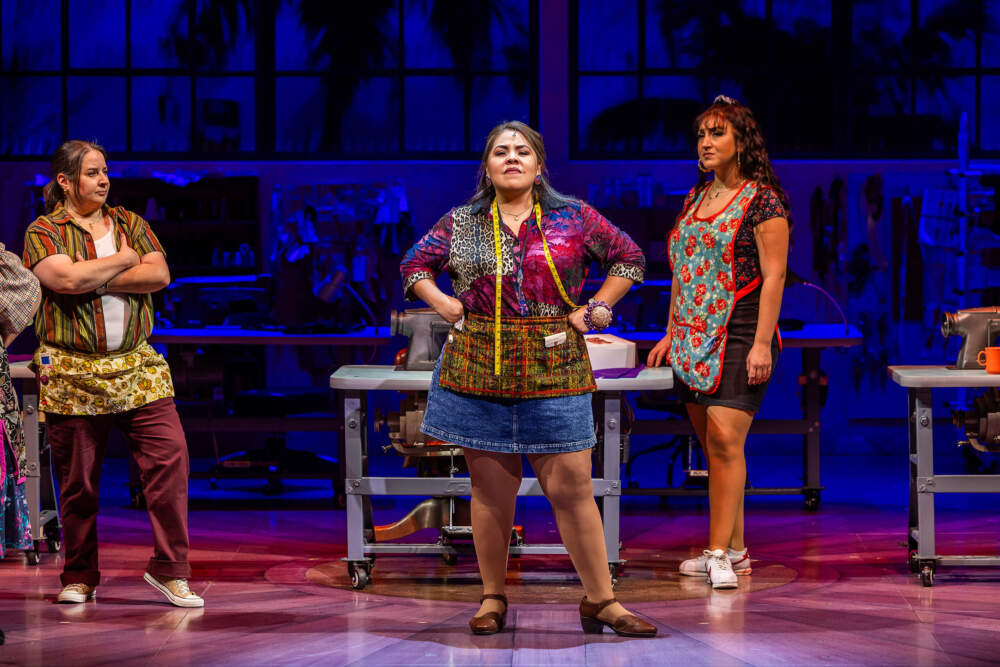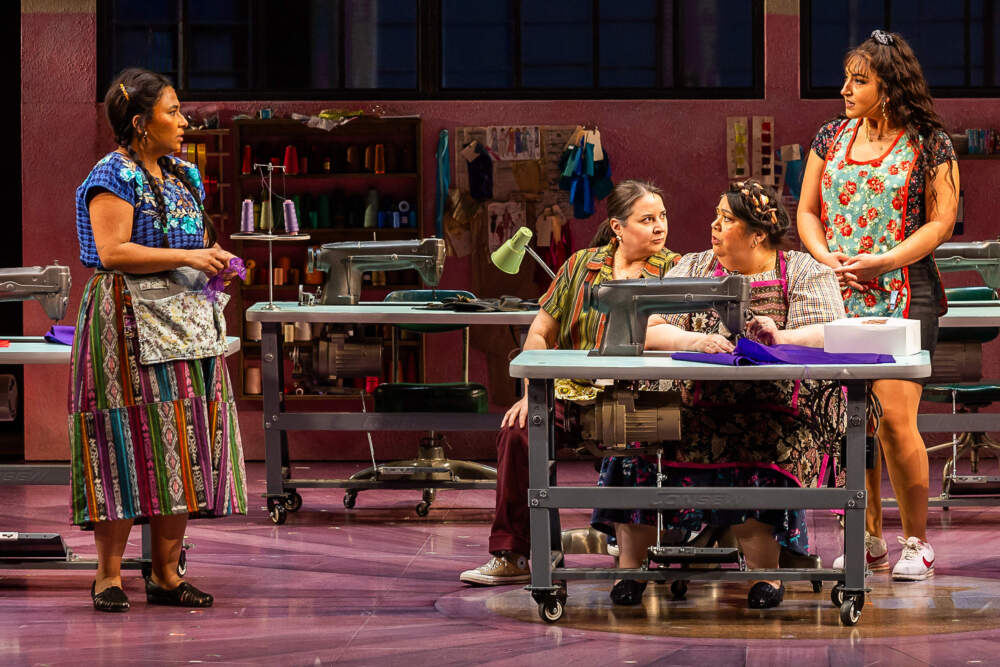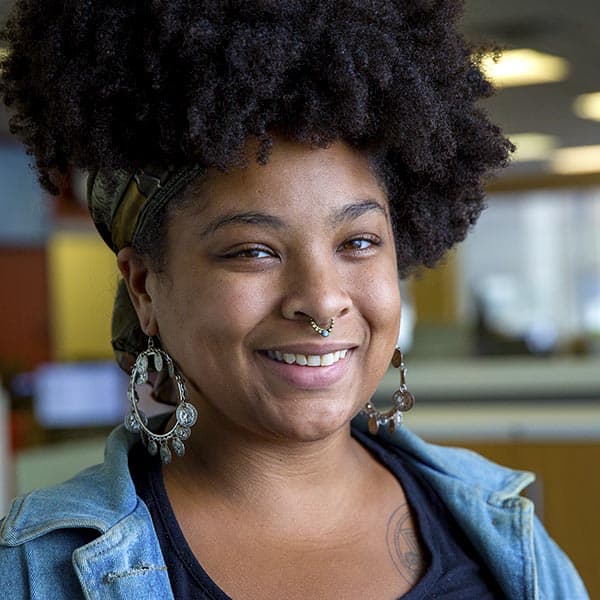Advertisement
'Real Women Have Curves: The Musical' shares nuanced Latina stories
Resume
Teenagers don’t always see eye to eye with their parents.
Mexican-American high school senior, Ana Garcia, knows this intimately. She dreams of leaving her Los Angeles neighborhood to attend college in New York, where she’s been accepted to Columbia University.
The only thing is that she neglected to share the information with her old-fashioned mother, Carmen, who wants Ana to take on more responsibility at the family-run garment factory. This tension between mother and daughter drives the plot of American Repertory Theater’s world premiere of “Real Women Have Curves: The Musical,” playing at the Loeb Drama Center through Jan. 21.
Directed and choreographed by Sergio Trujillo with music and lyrics by Joy Huerta and Benjamin Velez, “Real Women Have Curves” is a deceptively layered musical that blends comedy and drama to tell the story of Ana and the women she encounters at her sister’s garment factory. The musical is adapted from the play written by Josefina López, who used her own life as inspiration. Born in San Luis Potosí, Mexico, López moved to the United States when she was five years old, where she lived undocumented for 13 years.

“Ana is me, right at that age,” says López. “When I was working in the sewing factory trying to keep a journal, trying to keep from giving up because I was very depressed and sad that I couldn't go to college.” While at the sewing factory, Lopez met other women working there. Their lives, and López’s, would become the bedrock of the play. “It’s a collection of women’s experiences. It’s our story.”
Set in 1987, Ana juggles working at the garment factory with her sister and mother while working as a reporter. “Ana is so much more capable than she may have been given credit for,” says Lucy Godínez, who plays Ana in the production. “And that her leaving doesn't mean that she is abandoning their family.”
Ana is undoubtedly the protagonist of the musical but the other women in the production also take center stage. They each have their own stories, filled with joy and grief. Musical numbers like “Make It Work," "Fly Like a Bird" and “Siempre Mi Gente” give the audience a more nuanced insight into what it’s like to be undocumented, laying bare the complicated reality of leaving behind family and friends, and of course, the constant fear of deportation.

While Ana is a citizen, her family and the women at the garment factory are not. "The greatest source of suffering for immigrants is... We had to leave so much behind that we loved, to come here and be disrespected and treated as though we're not human," says López.
“La migra,” or Immigration and Customs Enforcement, is a persistent, hovering presence in the show's plot. As the main antagonist, “la migra” embodies a broken immigration system and the tenuous reality of being undocumented. It's a constant reminder of the overarching systems of xenophobia and racism that Ana, her family and the women at the factory must contend with in their everyday lives.
Although there are hardships, Ana and the women at the factory maintain possession of their empowerment and freedom. One important facet is that all of the women, including Ana, have different body shapes and deal with their own body image issues. Sharp-tongued Carmen makes harsh comments about Ana’s weight but eventually sees the error of her ways.

Godínez says it's an important representation in musical theater, where the prevailing “Broadway body” and conventionally attractiveness still thrives. “We talk about racial and ethnic and gender diversity in theater,” she points out. “But we don't talk about body diversity in theater in the same way... Getting to see people of all body types, it's so unique and it's not something that I've ever gotten to experience.”
The 2002 award-winning film adaptation of “Real Women Have Curves” was an important moment in cinema for Latina representation. With its nuanced portrayal of Latinas, the musical may provide a similar moment. Roles for Latinas in musicals can be limited, says Godínez. "What I love about this show is… it just blows all of that wide open and leaves so much room for multidimensional representation of Latinas.”
More than three decades after she started writing the play, López says the musical helps elevate the long-standing message of “Real Women Have Curves.” “Hopefully it's a source of inspiration for other women so that they too can tell their stories," she says. "They too can live their dreams and they too can love their bodies and themselves completely.”
“Real Women Have Curves: The Musical,” plays at the Loeb Drama Center through Jan. 21.
This segment aired on December 19, 2023.
